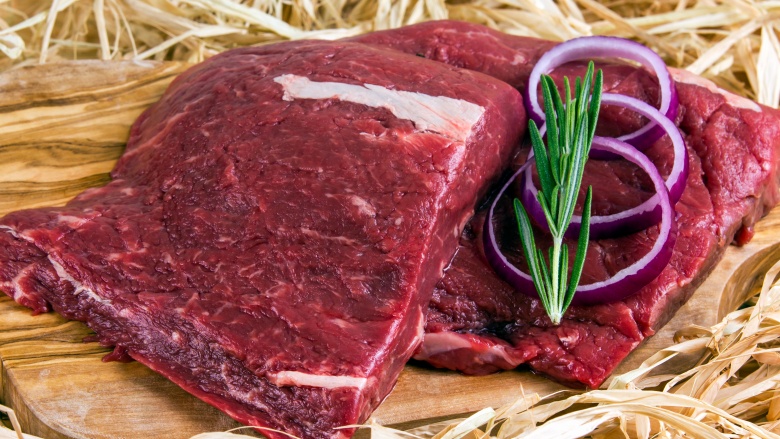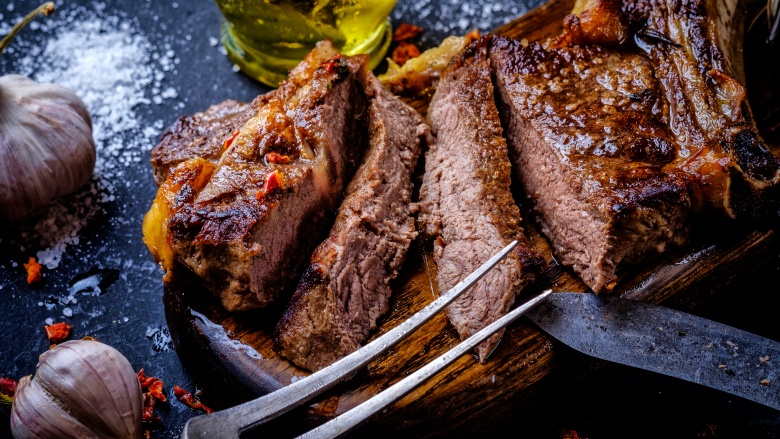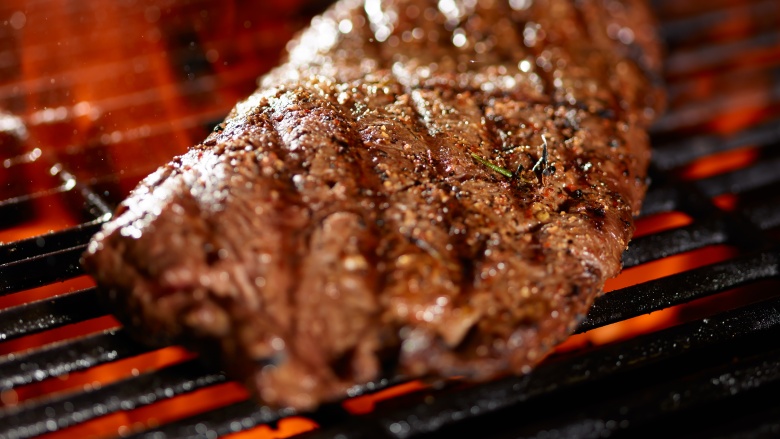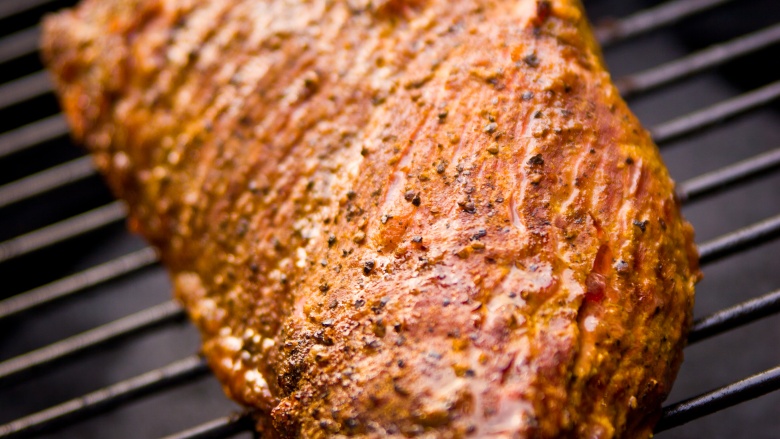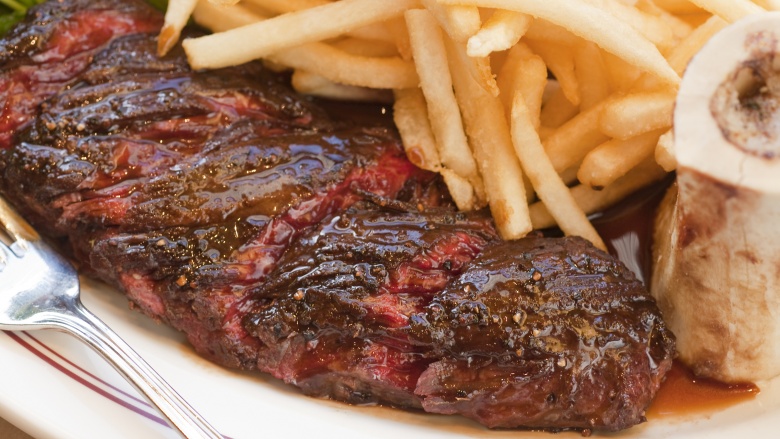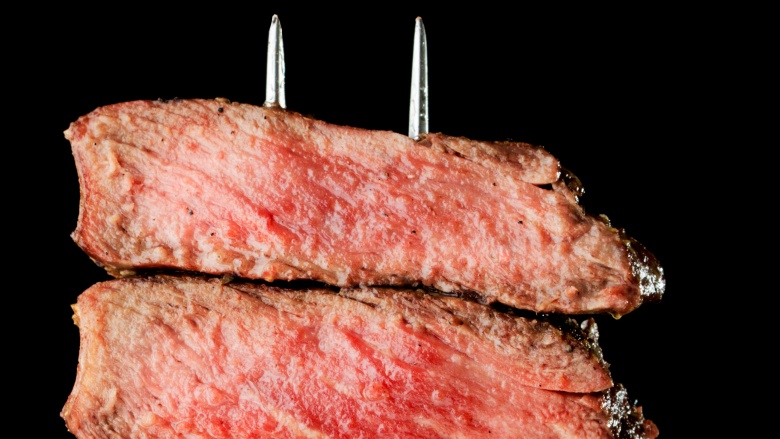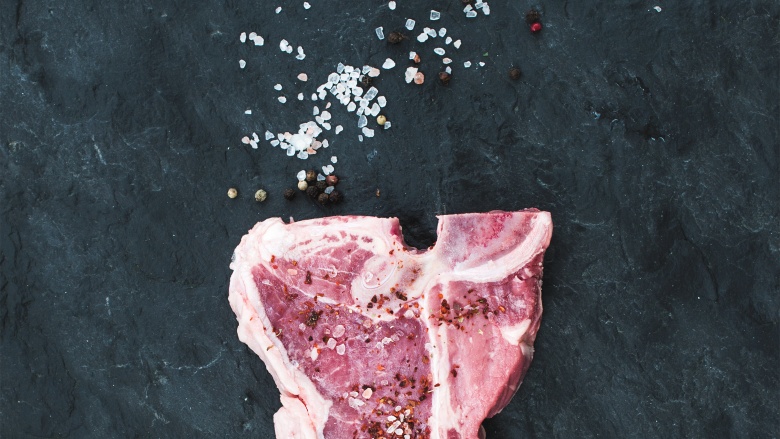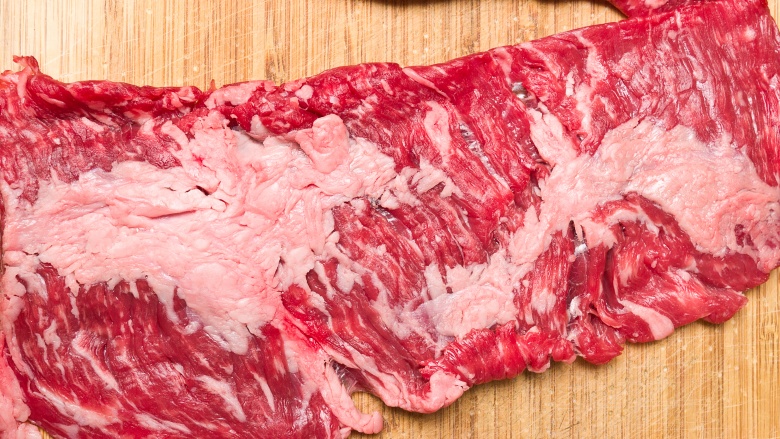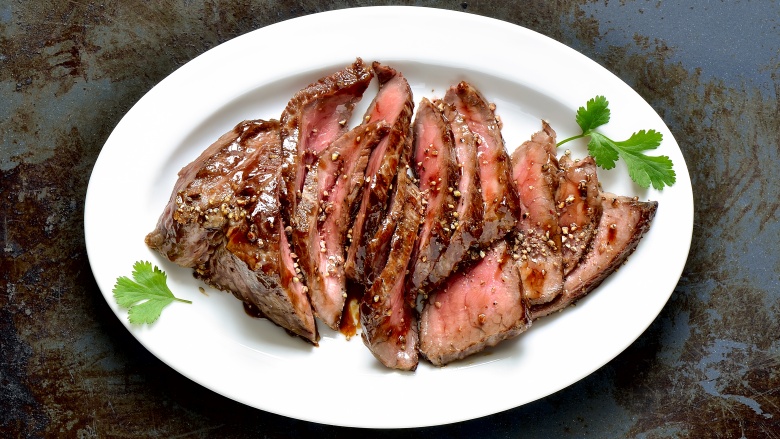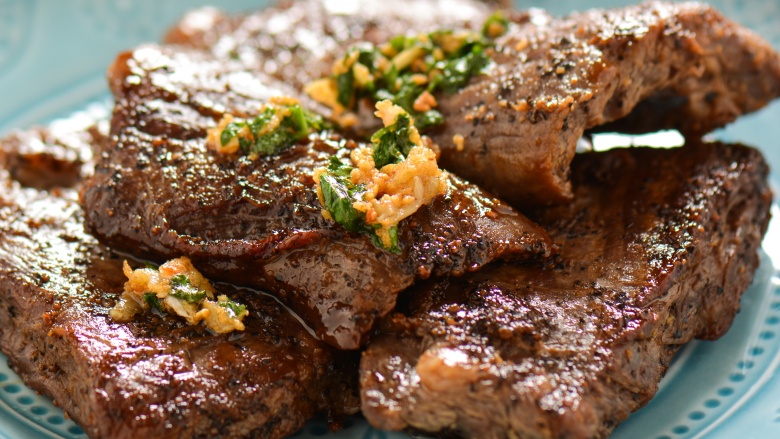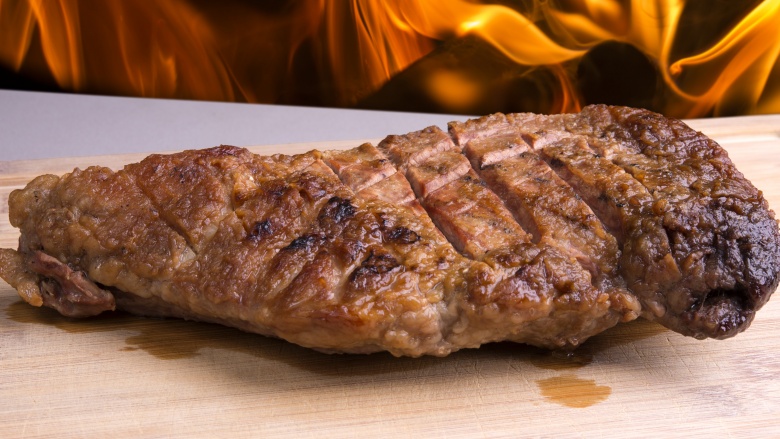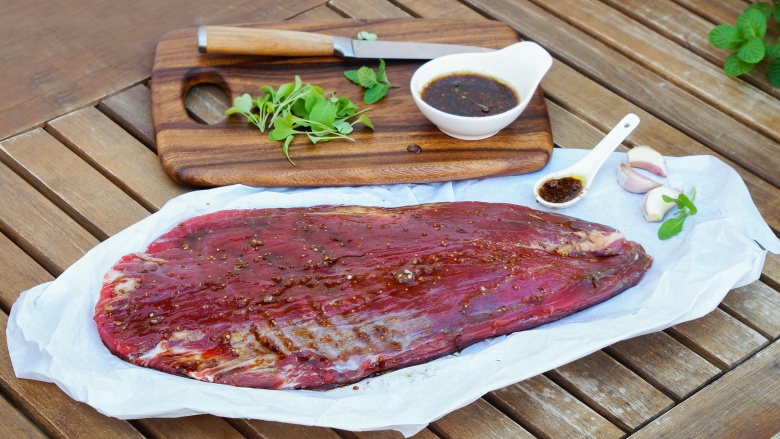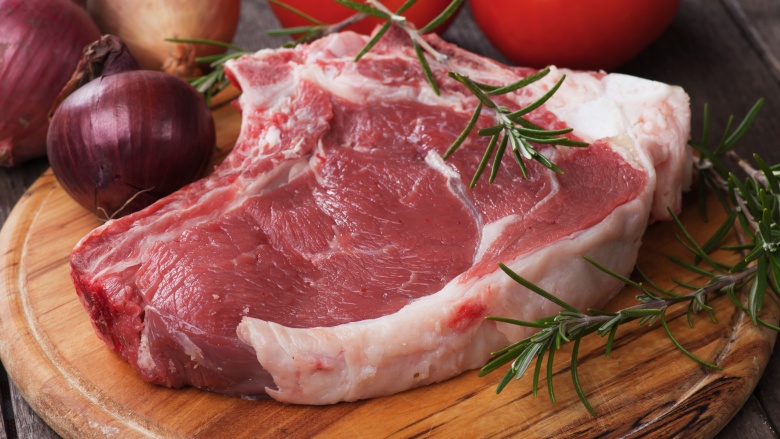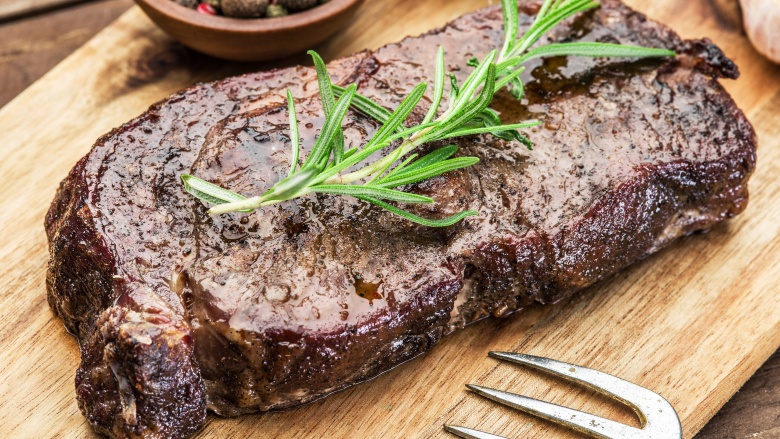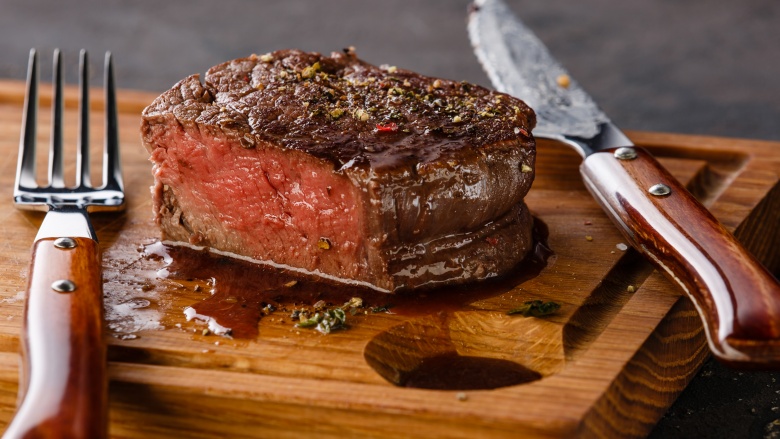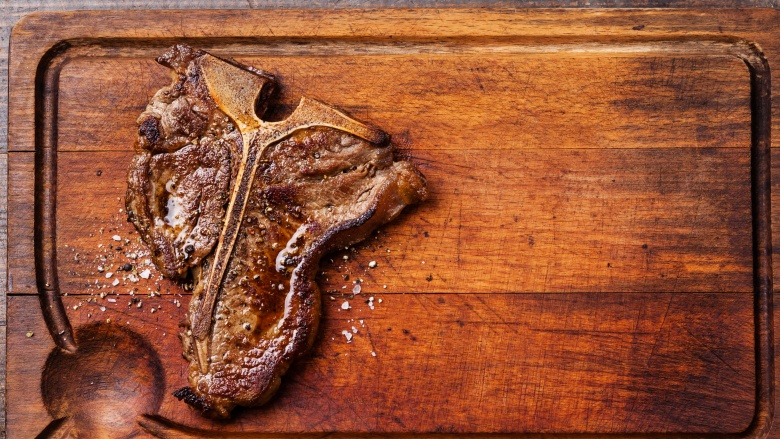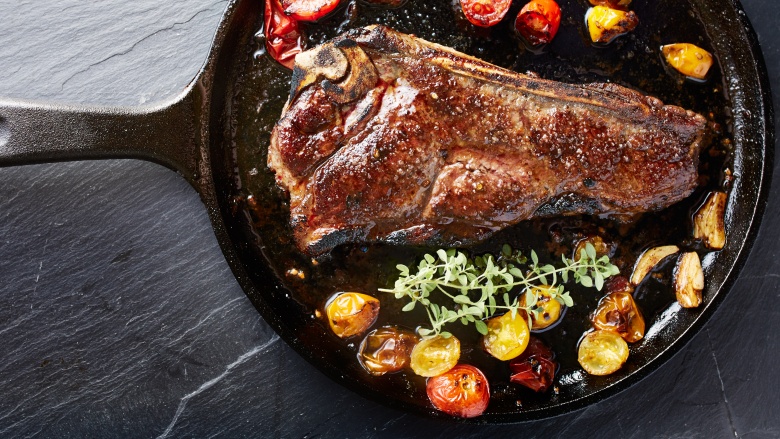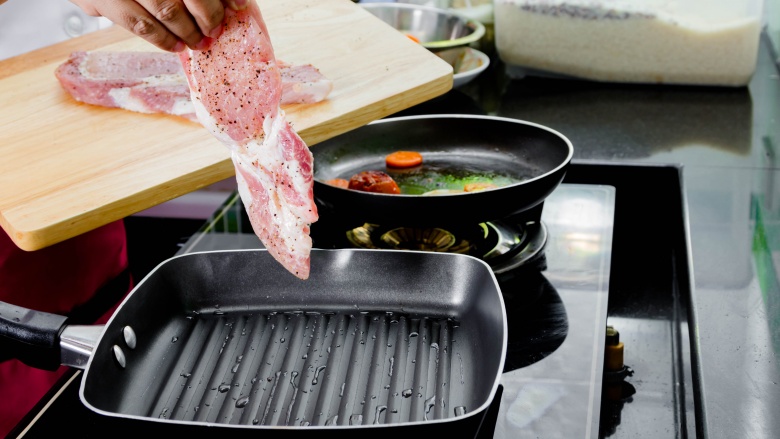The Best Cuts Of Steak For Any Budget
Enjoying a hearty slab of steak for dinner is either a special occasion luxury or a weeknight staple. Red meat has a lot going for it and, naturally, many fans who can't get enough of its energy-boosting qualities and rich flavors. Chock full of protein and downright mouthwatering, steak can be pan-seared, oven-roasted, grilled al fresco, and much more.
However you choose to prepare it, it's important to know your meat and understand why it costs what it does. The price of beef can vary widely depending on the cut of meat you choose. Luckily for protein lovers, there are steaks out there at every price point for every seasoning and cooking technique, so there's no reason you can't enjoy this mealtime favorite as often as you'd like. We'll give you the lowdown on all of these.
From budget-friendly cuts to affordable basics to fancy splurges, here's a streamlined guide to help you navigate the butcher's counter without breaking a sweat.
Best cuts of steak on a limited budget
Compared to more expensive steaks, butcher's cuts are taken from parts of the steer that have been exercised more strenuously over the animal's lifetime. These parts often consist of more muscle parts and tend to be rather difficult to access. The butcher is tasked with trimming the muscles back, while still leaving enough to yield a decent piece of meat for you to cook. These cheaper cuts can be very flavorful, but they do require more attention during prep so they don't dry out or become too tough to chew. Here's everything you need to know about butcher's cuts.
Chuck eye
Section: shoulder
Sometimes called "the poor man's rib-eye," chuck eye yields the most satisfying results when it's been marinated before cooking. Basting the meat with its own juices, a sauce, or butter during cooking helps to prevent it from drying out and becoming too tough. Likewise, cutting the steak against the grain after you cook it will produce much more tender slices. This cut is great for grilling and good for pan-searing. It is best when cooked to medium-rare or medium.
Flat iron
Section: shoulder
A deeply flavorful budget cut of steak, flat iron is becoming increasingly popular. With the tough center tissue removed, it transforms into a tender, juicy, rich piece of meat. Flat iron is ideal for grilling and pan-searing and, like chuck eye, is best cooked to medium-rare or medium.
Tri-tip
Section: loin
Recognizable by its unique triangular cut, tri-tip boasts rich, beefy flavor and tender meat. With a lovely marbling of fat, it stays nice and juicy during cooking. Like other butcher's cuts, tri-tip is ideal for the grill but also delicious when roasted.
Hanger
Section: plate (lower stomach)
Hanger steak is extremely flavorful and can be very tender when cooked correctly. As it has naturally long muscle fibers and a slightly coarser texture compared to other cuts, it can shrink back when cooked for too long. This cut of steak is best for cooking over high heat for a short period of time. Think grilling and broiling.
Flap
Section: loin
Like the other inexpensive cuts featured in this section, flap meat or flap steak is best when prepared with a marinade to help tenderize it. It is also at its most tender when cooked quickly over high heat to medium-rare or medium. Flap meat is a good choice for the grill.
Tips for your budget steak
Season your steak well. If you have time to spare, salt it generously and set it aside for one hour before cooking to help tenderize it. Rinse off the excess salt and pat thoroughly dry before cooking.
Mid-range: decent price, more flavor
Perfectly priced somewhere between butcher's cuts and the most expensive sections of the steer, these economical steaks are the ideal choices for casual indulgence, and they yield excellent results when paired with marinades. As they are generally leaner cuts, you'll find that they are most tender when cooked quickly over high heat. Prized for their all-around deep and intense flavor, you'll definitely want to consider these steaks to get the best beef for your buck.
Flank
Section: flank
A long, narrow cut of meat, flank steak contains many muscle fibers that can make it a little tough if overcooked. On the upside, you can counter the tough nature by cutting the steak against the grain after you cook it. Also, flank steak is full of delicious beefy flavor! Try prepping it with a marinade, then grilling or pan-searing to medium-rare or medium.
Skirt
Section: plate (lower stomach)
Like the flank, skirt steak is a thin cut of meat that tends to be full of muscle fibers. Its leanness means you may need to utilize the help of a marinade. As long as you don't overcook it, you'll get bold beef flavor in return. This cut is great for grilling, but it's also suitable for pan-searing or stir-frying.
Sirloin tip
Section: bottom back loin
Notes: While not as tender as expensive top sirloin, sirloin tip has potential for greatness when met with the right marinade. It is leaner than other parts of the loin and requires close attention during cooking. You want to avoid cooking this steak beyond medium so it doesn't become too tough. That said, it's a natural choice for the grill.
Tips for your mid-range steak
Marinate your steak for at least two hours or overnight to incorporate as much flavor as possible and to greatly increase the meat's tenderness. And if you don't have a meat thermometer, get one.
Pricey: the best steaks money can buy
These pricey cuts of steak cost a lot because they come from the parts of the steer that haven't been worked very hard. As a result, the meat is naturally tender and contains little or no connective tissue that needs to be cooked down. These ultra-desirable pieces also come with premium price tags because they make up a relatively small part of the steer. Since these steaks are inherently tender and deeply flavorful, they require much less effort and technique to cook. You can skip the marinade and simply sear over high heat to lock in the flavor, then continue cooking to desired doneness.
Rib-eye
Section: Upper ribcage
Rib-eye has a significant amount of fat marbling throughout, especially around the outer edges. As such, it is a very tender, flavorful, beefy cut. High in fat content, rib-eye can withstand high temps and remain decadently juicy inside. While it's difficult to overcook this steak, you'll still need to pay attention to splatter as a result of the meat's natural fattiness.
Tenderloin or filet mignon
Section: loin, directly beneath the ribs
Usually cut small and thick by the butcher, tenderloins are beloved for their fine texture and buttery taste. Trimmed of its fatty edges, this steak is often considered the most luxurious one and yields extremely tender meat. Tenderloin is best seared over high heat until browned on the outside, then finished in the oven to desired doneness.
T-bone
Section: loin cross-section, unfilleted
This bone-in wonder can be identified by its T-shaped bone with meat on each side. One side features a slab of tenderloin (good), while the other is a segment of strip steak (very good). With nice marbling all the way through, this iconic steak is prized for its all-around strong marks in flavor and texture. It's simultaneously buttery like filet mignon and beefy like New York strip. You can grill or sear T-bone, but be sure to rotate it if necessary to ensure even cooking.
New York strip
Section: Loin, behind the ribs
Notes: New York strip steak, also called Kansas City strip, is a steakhouse classic. Slightly less tender than tenderloin or T-bone, this steak is still relatively tender when cooked properly. With some marbling and fat distributed throughout, strip steak is a reliable choice for bold beef flavor. It fares extremely well over high heat for a short period of time.
Tips for your pricey steak
To ensure you get the most from your premium steak, be sure to pat it thoroughly dry and season it well. Additionally, make sure the pan is completely dry and hot before adding your steak.

